
I seem to have spent a lot of time over the last few years reading and writing about fascism, rather than about the positive ideas which inspire me.
I have felt obliged to do so because of our society’s worrying general blindness concerning what fascism was, historically, and what it has evolved into today.
It seems apparent to me that this state of affairs has not come about by accident. The new breed of fascists, who currently hold the reins of power almost everywhere, have worked hard for decades to brew up this fog of confusion.
Our culture has taught us not only to hate and fear fascism, particularly its German incarnation, but also to regard it as very much “other” to our contemporary military-economic complex, even as its complete opposite.
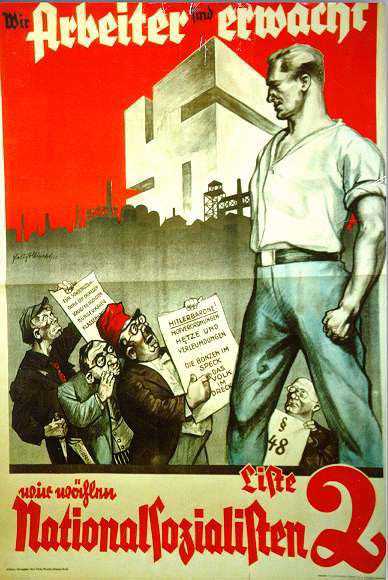
The current system is a global one, while fascists were focused on the national level, so how could there possibly be any similarity between the two approaches?
“Enterprise” and “prosperity” are the watchwords of our society, whereas the Nazis were “socialist”, we are told. (Look at the name of their party! It must be true! Are you suggesting they actually lied to the German working class in order to come to power?)
Nazis defined people according to race in order to exclude them from their society, while today’s Great Reset progressives define people according to race in the interests of “equity”, “inclusivity” and “social impact”. Quite the opposite, surely?
The fascists imposed mass conformity and obedience whereas our democratic societies nurture proud individuality and free thinking… don’t they?
In short, we need to seriously reappraise our received knowledge about the historical significance of fascism and its relation to society in the 2020s.
As a small contribution to that process, I would like to share here Three Brief Insights which I have gained from some recent reading.
First insight
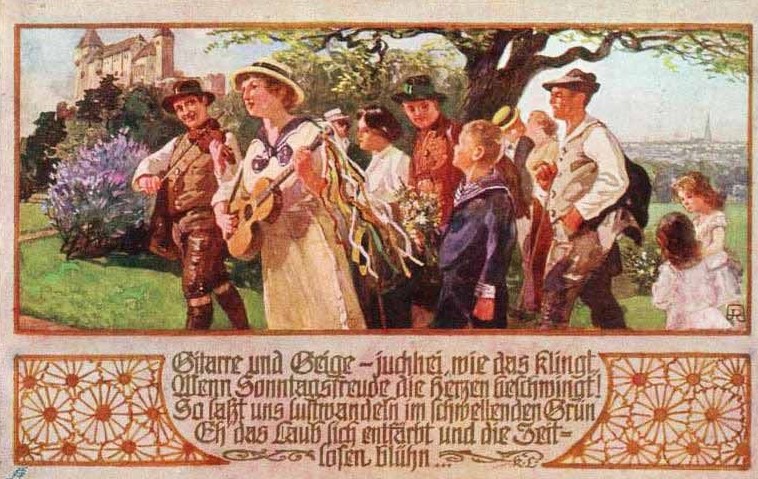
The Wandervögel of the Jugendbewegung in late 19th and early 20th century Germany have been much maligned.
These outdoors-loving, free-wandering youngsters formed an important anti-industrial movement, a powerful counterculture which rejected the emptiness of the corrupted modern world and sought to renew awareness of our organic human belonging to nature.
This was a significant cultural uprising, a rebellion against the extinction of life and happiness which was being ruthlessly inflicted by the money-making machineries of greed and profit.
However, not only was this blossoming of hope crushed and buried in the slaughter of the First World War, but it has subsequently been deliberately smeared by those who fear another great wave of rejection of the industrial slave-system that has stolen our joy and our future.
A certain brand of propaganda likes to insist that the Wandervögel represented “the beginnings of the Hitler Youth”, (1) that they were involved in a “shift from nature worship to Führer worship”, (2) that they “significantly paved the way to dictatorship” (3) or even that they were “responsible for the flight and expulsion of the Jews”. (4)
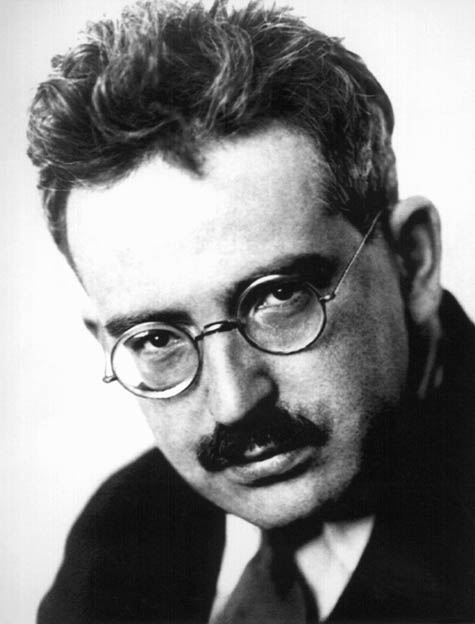
The outright deceit involved in these accounts came home to me when I was reading Gershom Scholem’s account of his friendship with Walter Benjamin (pictured).
Here he reveals that Benjamin, when he first came across him, was a leading light in this Wandervögel movement in Berlin. (5)
Benjamin, who subsequently became known for his unusual combination of Jewish mysticism and Marxist analysis, never abandoned the Jugendbewegung critique of so-called “progress”.
He based his personal philosophy on the importance of myth and tradition and insisted that while a return to the past was not physically possible, we could still take a detour via the past in order to find the path to a future of our choice.
Benjamin was far from being the only Jewish or “left-wing” member of the Wandervögel, which was a phenomenon much broader than the usual narrow and misleading political categories.
Their revolt did not lead to Nazism, as the propagandists claim, but was co-opted and distorted by the Nazis to serve their own nefarious ends.
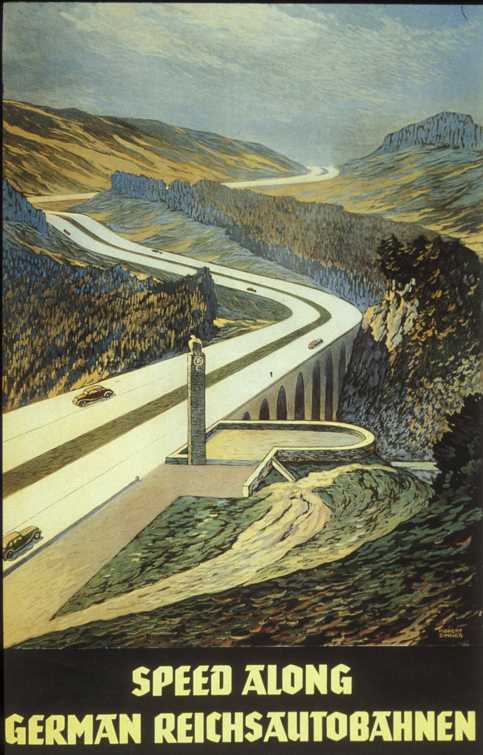
As John de Graaf has pointed out: “Hitler formed an alternative youth movement which won adherents because it copied the trappings and rhetoric of the earlier counterculture, while adding a strong dose of Nazi discipline and ideology”. (6)
There is a familiar ring to this, for anyone who has been closely observing the fake-green movement which has been manufactured to promote the Great Fascist Reset and its Fourth Industrial Reich – or indeed the fake-left movement which serves the same manipulative master.
Fascist environmentalism was about as genuine as that of today’s phoney bright greens. It was factory-produced ersatz environmentalism.
The autobahn-building, machinery-obsessed, modernising Nazis loved nature in the same way that the UK’s Conservative Party wants to “conserve” traditional ways of living, that the Labour Party really represents the interests of “labourers”, that US Democrats are actually “democratic” or that the Soviet Union was a genuine union of local revolutionary councils (“soviets”).
All of this is just “narrative”, spin, marketing, lies. Everything this cynical industrial system throws at us is fake. Its “politics”, its “news”, its “culture”, its “science”, its “crises”, its “solutions” and, of course, the “history” with which it justifies its ongoing control and blinds us to the desirability and possibility of breaking free from its life-destroying grip.
Second insight
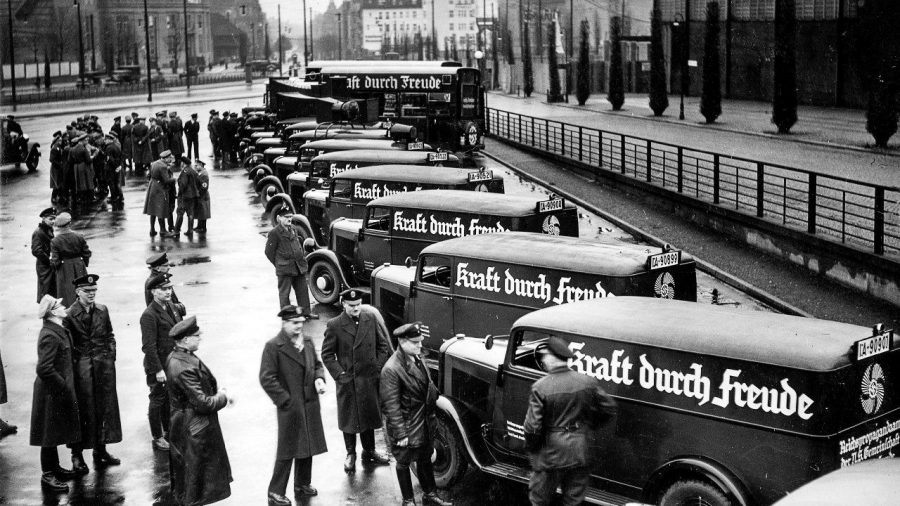
Reinhard Höhn was a leading character in the world of business management during the “miracle” economic recovery in West Germany in the decades after the second world war.
In 1953 he became head of the Deutsche Volkswirtschaftliche Gesellschaft, an industrial think-tank aiming to maximise economic growth through efficient management.
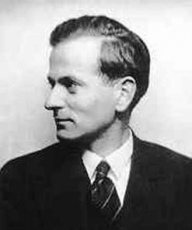
Johann Chapoutot explains that “in the context of the Marshall Plan and triumphant atlanticism”, (7) this project was all about training American-style managers in the style of the Harvard Business School.
From 1956, Höhn ran the Akademie für Führungskräfte (Management Academy) at Bad Harzburg, which welcomed executives from thousands of firms including Aldi, BMW, Hoechst, Bayer, Telefunken, Esso, Krupp, Thyssen, Opel, Ford, Colgate, Hewlett-Packard… (8)
Is it a surprise to learn that just a few years previously Höhn had been a prominent Nazi, a protégé of Heinrich Himmler, a shining light of the SS who finished the war with the rank of SS-Oberführer? (9)
As Chapoutot points out in his 2020 book Libres d’Obéir: le management du nazisme à aujourd’hui, there was no breach in his personal continuity: “Like Klaus Barbie and so many others, Professor Dr Höhn pulls off this redeployment without changing: after the war he becomes what he has always been”. (10)
And what was Höhn, both before and after 1945? A “technocrat intellectual” (11) replies Chapoutot. A right-wing social darwinist, a proponent of public-private partnerships merging the state with big business, (12) a man obsessed with Führung (leadership) (13) and the fanatic desire for success at all costs.
This is not just about Höhn. Justus Beyer, a leading Nazi who ended the war as Obersturmbannführer, taught alongside him in the 1970s. (14)
And one of the pillars of the Bad Harzburg training school was Professor Dr Franz-Alfred Six. In 1941, Six led a Nazi commando operation in Russia, under SS General Arthur Nebe, and was subsequently found guilty of crimes against humanity at Nuremberg.
Despite a 20-year sentence handed out in 1948, he was free again in 1952. Like many Nazis, Six joined the “liberal” Freie Demokratische Partei (FDP), then landed a job as marketing director for Porsche and started teaching at Höhn’s academy. (15)
This thinking regards people as nothing but raw materials, as “human resources” to be ruthlessly exploited
The implications are broader still, of course. These personal stories merely illustrate the deep thematic continuity between the social aims of Hitler’s Germany and those of post-WW2 “liberal democracy”.
Chapoutot shows that contemporary management thinking, while it already existed in the 1930s, was greatly formed by the Nazi period, with the Fourth Reich’s ideology central to the theory and practice of post-war management.
This thinking regards people as nothing but raw materials, as “human resources” to be ruthlessly exploited.
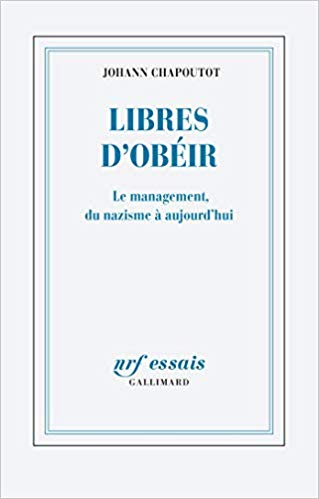
The fake “freedom” that Höhn’s academy proposed for its business leaders, as the title of Chapoutot’s book points out, meant being “free to obey”, to practise what Klaus Schwab calls “agile governance” and to push for efficiency and productivity above all human considerations, which are not regarded as important by the cold techno-fascist mind.
Describing this nazi-industrial “reification” of humanity, Chapoutot writes: “It transforms each person into a thing (res), an object, which must be useful in order to have the right to live and exist. The Germanic individual becomes a tool, a raw material (Menschenmaterial) and a factor – a factor of production, of growth, of prosperity”. (16)
This outlook has no time for the idle or the ill, for anyone who cannot show themself to be leistungsfähig – productive and profitable. Any such anti-social misfits and refuseniks face social exclusion and even the concentration camps.
There is nothing “socialist” about this right-wing social darwinist position, of course, and Chapoutot describes this part of the “National Socialist” brand as “a semantic trap” (17) aimed at luring natural left-wingers into the nationalist fold.
He concludes: “In pushing destruction of nature and exploitation of the ‘life force’ to whole new levels, the Nazis can be seen as a distorted and revealing image of a modernity gone mad – served by illusions (the ‘final victory’ or the ‘return to growth’) and by lies (‘freedom’, ‘autonomy’) cleverly crafted by management thinkers like Reinhard Höhn”. (18)
Third insight
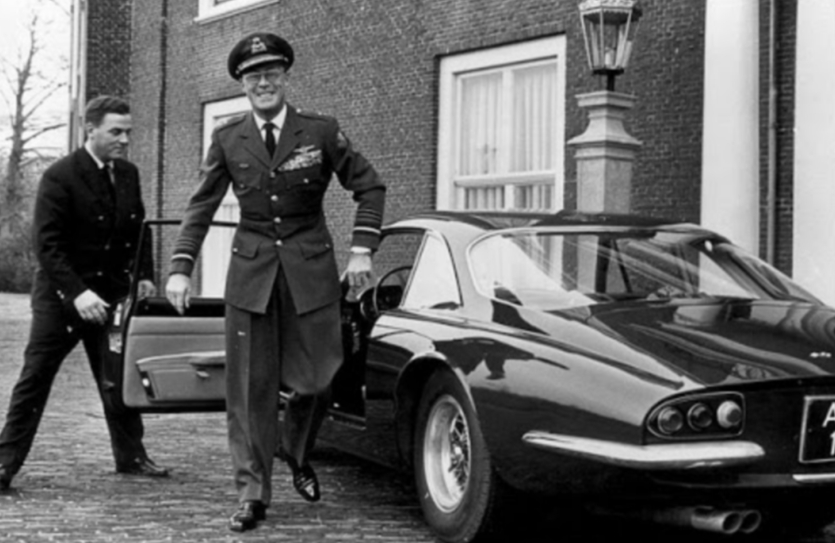
It has now been 45 years since the publication of Antony C. Sutton’s classic book, Wall Street and the Rise of Hitler.
His revelations, showing how the Nazis were funded through the back door by international chemicals, electricity, automobile, steel, telecommunications, oil and coal businesses, and the shady financiers behind them, have become familiar to many people over the intervening decades, so I won’t recount them all as if they were breaking news.
However, much of what he sets out seems even more important today, in the face of Klaus Schwab’s Great Fascist Reset.
Sutton’s concluding lines, for instance, have lost none of their relevance since he penned them in 1976.
He writes: “Periodic crises and wars are used to whip up support for other plunder-reward cycles which in effect tighten the noose around our individual liberties.
“And of course we have hordes of academic sponges, amoral businessmen, and just plain hangers-on, to act as non-productive recipients for the plunder.
“Stop the circle of plunder and immoral reward and elitist structures collapse. But not until a majority finds the moral courage and the internal fortitude to reject the something-for-nothing con game and replace it by voluntary associations, voluntary communes, or local rule and decentralized societies, will the killing and the plunder cease”. (19)
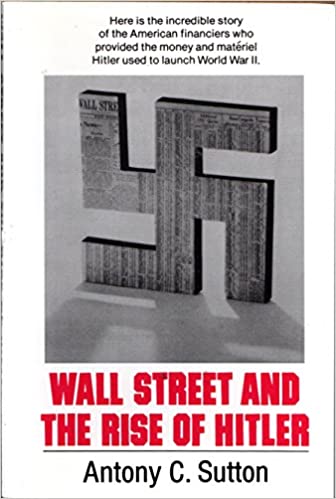
The overall finding in Sutton’s book, for which he provides detailed evidence, is that behind the Nazi New Normal Order lay “a provable pattern of subsidy and political manipulation” (20) carried out by a power elite which “has its own objectives, which are inconsistent with those of the public at large”. (21)
Hitler’s project appealed to these networks because “it is in the pecuniary interests of the international bankers to centralize political power”, (22) he explains. The whole thing was about “control of the State by private business interests”. (23)
“There was a linked sequence of major events; the financial contribution from prominent bankers and industrialists to the 1933 election, burning of the Reichstag, abrogation of constitutional rights, and subsequent seizure of power by the Nazi Party”, (24) states Sutton.
He quotes Caroll Quigley, from his 1966 book Tragedy and Hope, when he describes the plan as being “nothing less than to create a world system of financial control, in private hands, able to dominate the political system of each country and the economy of the world as a whole”. (25)
The profitability of this parasitical global enterprise came at a price of course: the tens of millions of lives lost or ruined by the consequences of its greed, not least the “meaningless, meandering no-win wars” which have “no other major purpose but to generate multibillion-dollar armaments contracts”. (26)
It was interesting to see that Sutton highlights the key role played by J.P. Morgan in promoting fascism in Germany. As I have previously described, the same was true in Italy, where the American financiers boosted Mussolini’s regime with a $100m loan between 1925 and 1927. (27)
Today the firm, now known as JPMorgan Chase & Co, is involved in impact capitalism (28) and is a partner of the World Economic Forum.
It is worth noting, in the light of all the current talk about a Green New Deal and a New Deal for Nature, that Sutton condemns President Franklin D Roosevelt’s original New Deal as a “fascist plan” and says that “both Hitler’s New Order and Roosevelt’s New Deal were backed by the same industrialists and in content were quite similar – ie, they were both plans for a corporate state”. (29)
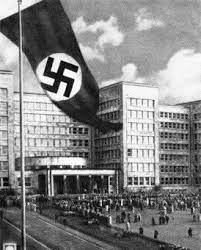
Also very striking is what Sutton describes as “the central role of IG Farben in Hitler’s coup d’état“. (30) He says the chemicals business, which manufactured the Zyklon B gas used in the concentration camps, wielded “extraordinary political and economic power and influence within the Hitlerian Nazi state” and amounted, effectively, to “a state within a state”. (31)
One of its former executives, Dr George von Schnitzler, even declared that “IG is largely responsible for Hitler’s policy”. (32)
Sutton writes: “The Berlin NW7 office of IG Farben was the key Nazi overseas espionage center… The so-called statistics department of NW7 (known as VOWI) was created in 1929 and evolved into the economic intelligence arm of the Wehrmacht [army].
“At the outbreak of war in 1939 VOWI employees were ordered into the Wehrmacht but in fact continued to perform the same work as when nominally under IG Farben.
“One of the more prominent of these Farben intelligence workers in NW7 was Prince Bernhard of the Netherlands, who joined Farben in the early 1930s after completion of an 18-month period of service in the black-uniformed SS”. (33)
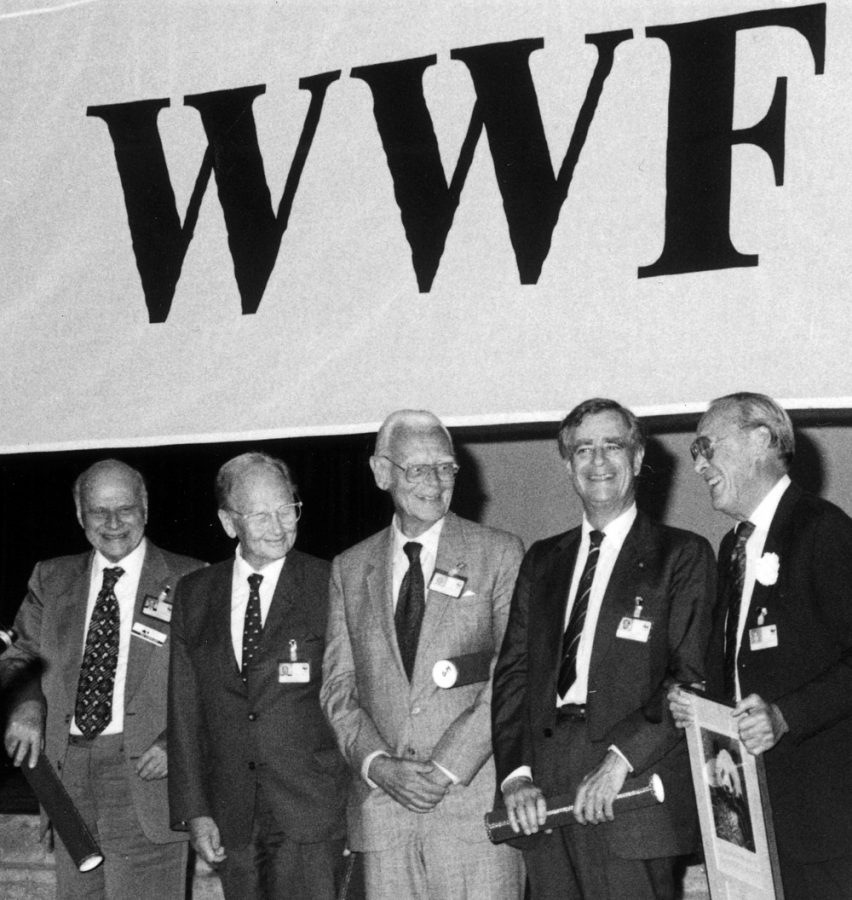
Bernhard (pictured right and also at the top of this section) went on to become founder-president of the WWF, notorious for throwing indigenous people off their land on behalf of its big business friends under the false green flag of “conservation” and today very prominent in the industrial-financial lobby calling for a New Deal for Nature.
He chaired the Steering Committee of the Bilderberg Group, of which WEF boss Klaus Schwab was a fellow member.
Bernhard was also honorary sponsor of Schwab’s third European Management Symposium at Davos in 1973, when the body which was to become the World Economic Forum first adopted a more overtly political stance, by agreeing a document which became known as “the Davos manifesto”.
This was originally entitled a “Code of Ethics”, but maybe even its hard-headed business promoters drew the line at a label flaunting quite that degree of hypocrisy.
The real agenda behind this manifesto (and indeed behind the WEF/UN buzzword “sustainability”) is summed up in its last point: “It is important to ensure the long-term existence of the enterprise. The long-term existence cannot be ensured without sufficient profitability”. (34)

(1) https://tinyurl.com/v4vt5h9j
(2) https://tinyurl.com/4csd7c2e
(3) https://tinyurl.com/3eajfxw6
(4) https://tinyurl.com/yb2yetuf
(5) Gershom Scholem, Walter Benjamin: Histoire d’une amitié, trans. by Paul Kessler (Paris: Presses Pocket, 1989), p.11
(6) https://tinyurl.com/bamc7kzj
(7) Johann Chapoutot, Libres d’Obéir: le management du nazisme à aujourd’hui (Paris: Gallimard, 2020), p. 87.
(8) Chapoutot, p. 90.
(9) Chapoutot, p.82.
(10) Chapoutot, p. 83.
(11) Chapoutot, pp. 77-78.
(12) Chapoutot, p. 117.
(13) Chapoutot, p. 113.
(14) Chapoutot, p. 88.
(15) Chapoutot, p. 89.
(16) Chapoutot, pp. 65-66.
(17) Chapoutot, p. 71.
(18) Chapoutot, p. 141.
(19) Antony C Sutton, Wall Street and the Rise of Hitler (Sudbury: Bloomfield Books, 1976), p. 177.
(20) Sutton, p. 166.
(21) Sutton, p. 172.
(22) Sutton, p. 173.
(23) Sutton, p. 55.
(24) Sutton, p. 108.
(25) Carroll Quigley, Tragedy and Hope (New York: The Macmillan Company, 1966), p. 324, cit. Sutton, p. 27.
(26) Sutton, p. 175.
(27) Pierre Milza and Serge Berstein, Le fascisme italien 1919-1945 (Paris: Editions de Seuil, 1980), p. 228.
(28) See ‘Ronald Cohen, impact capitalism and the Great Reset’. https://winteroak.org.uk/2021/01/27/ronald-cohen-impact-capitalism-and-the-great-reset/
(29) Sutton, p. 121.
(30) Sutton, p. 163.
(31) Sutton, p. 33.
(32) Sutton, p. 42.
(33) Sutton, pp. 37-39.
(34) https://tinyurl.com/4ey6cs3n
Leave a Reply